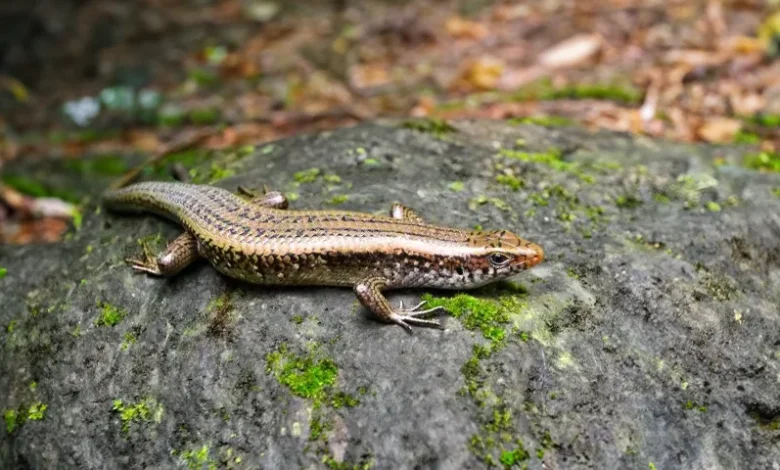Mabuya – Mabouya Lizard

The Mabuya – Mabouya (Dominica Skink) is an endemic lizard from the Scincidae family. This species is recognized for its adaptability to diverse environments, showcasing the island’s rich array of endemic species of Dominica.
The Mabuya – Mabouya’s Physical Characteristics and Habitat
The Mabuya – Mabouya Lizard has a streamlined body with smooth, shiny scales typical of skinks. Its colouration, ranging from brown to olive, provides camouflage against the forest floor and leaf litter. Adults, including the tail, generally measure between 15 to 20 centimetres in length. This species primarily inhabits Dominica’s rainforests, thriving in lowland and montane forests. It favours areas with abundant ground cover, such as leaf litter and fallen logs, which offer protection and foraging opportunities. The skink’s distribution is widespread across the island, reflecting its successful adaptation to varied microhabitats.
Behaviour, Diet, and Conservation Status
As a diurnal species, the Dominica Skink actively forages during the day, primarily consuming insects and other small invertebrates, which contributes significantly to controlling insect populations. When threatened, it can shed its tail—a defense mechanism known as autotomy, used to distract predators and escape. The Dominica Skink is classified as Least Concern by the International Union for Conservation of Nature (IUCN). However, habitat destruction and the introduction of invasive species pose ongoing threats. Conservation efforts focusing on habitat preservation are essential for ensuring the species’ continued survival.
Research and Cultural Significance
Research on the Mabuya—Mabouya Lizard enhances our understanding of biodiversity. Studies into its ecological role, behavior, and adaptations have provided valuable insights into the evolutionary processes affecting island species. Although it is not as well-known as other native species, the Dominica Skink is part of Dominica’s natural heritage. Its presence emphasizes the island’s unique biodiversity and the importance of environmental conservation.
Future Directions
Continued research and monitoring are crucial for assessing the Dominica Skink population dynamics over time. Public education initiatives can further enhance awareness of its significance, encouraging conservation efforts and fostering a greater appreciation for Dominica’s natural resources.




